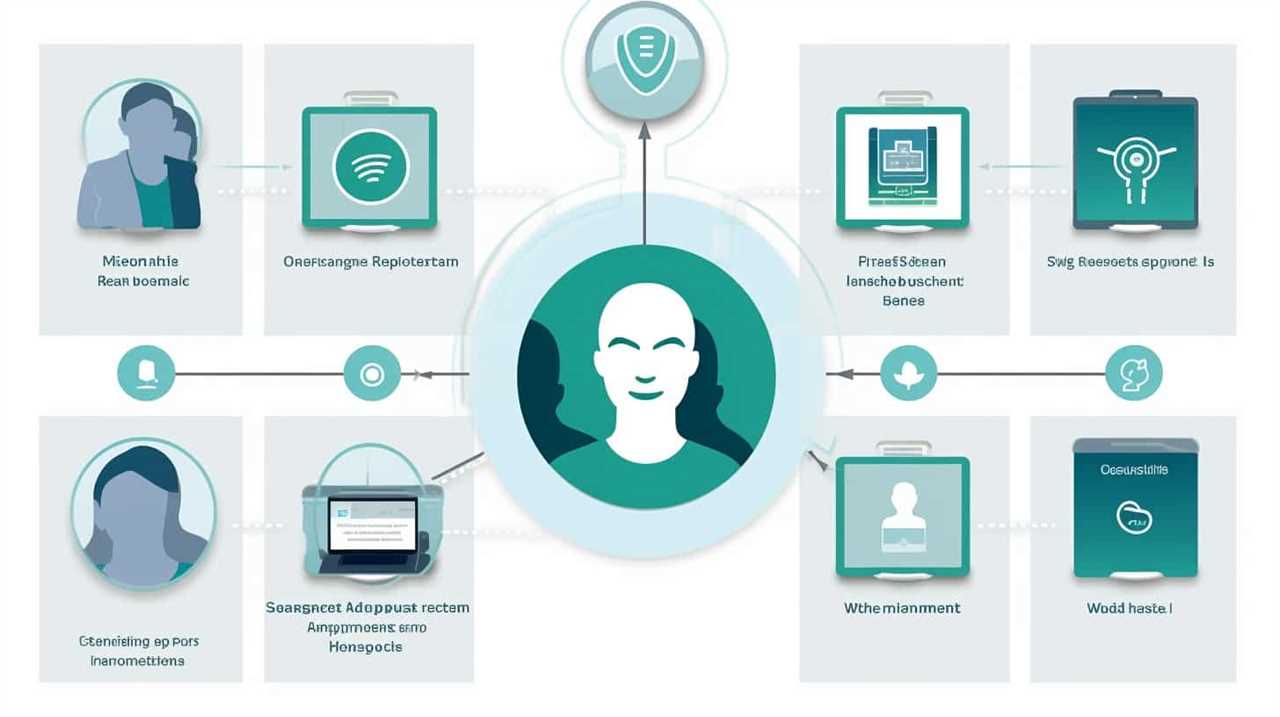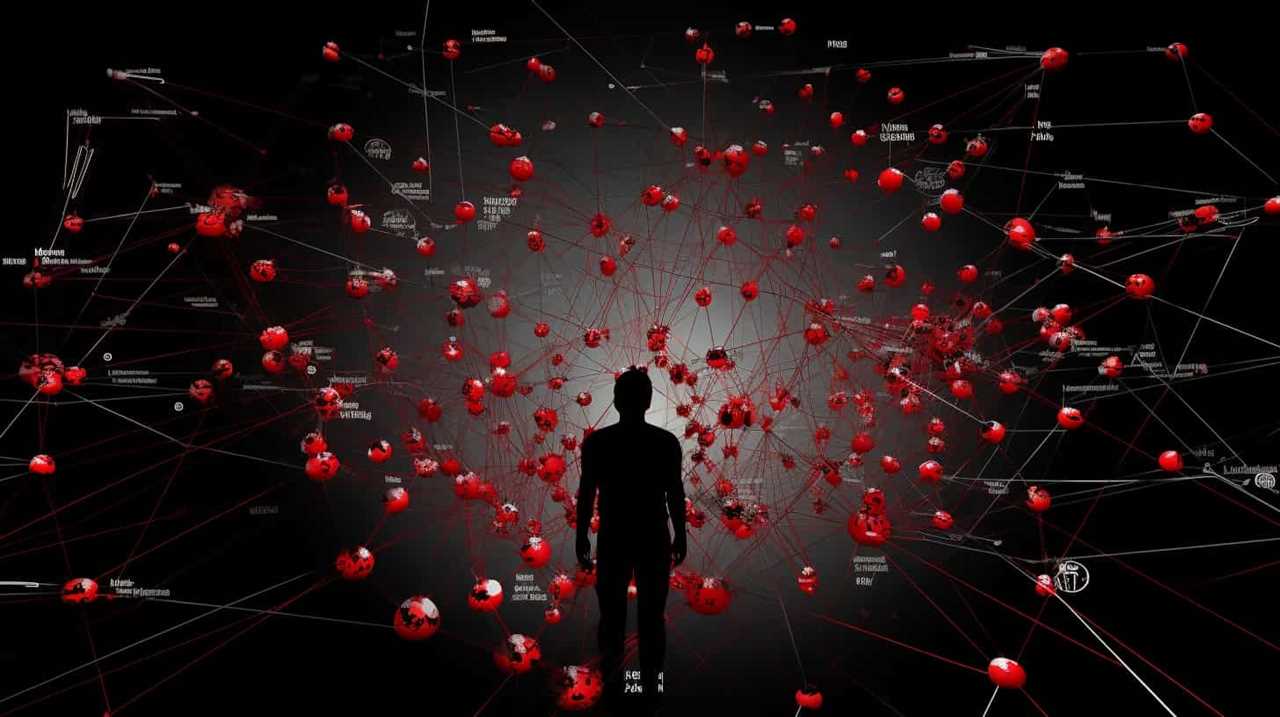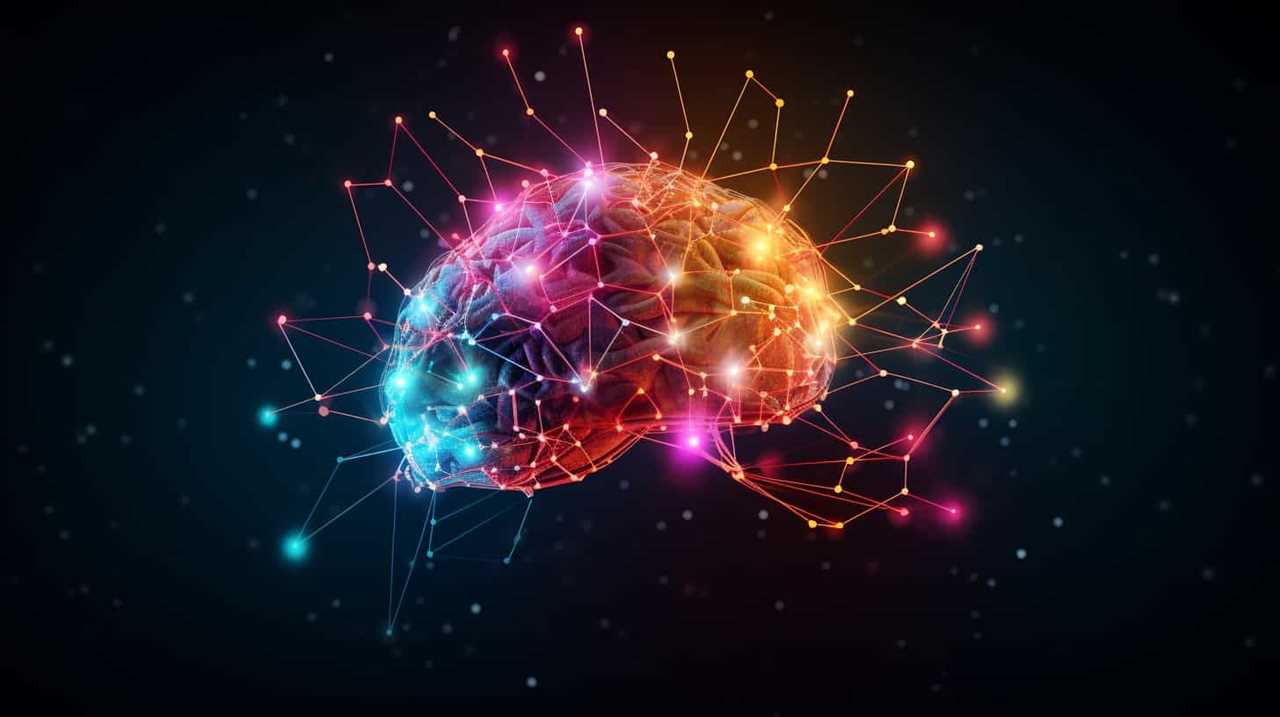I am excited to talk about the advanced techniques AI uses to fight cybercrime as someone with a strong interest in AI security.
Brace yourself, because this article will take you on a journey through the rise of AI security, exposing the intricate world of cyber crime threats.
Get ready to dive deep into the realm of AI-powered threat detection systems and witness the incredible feats of AI-driven incident response and remediation.
Stay tuned for a glimpse into the future of AI security and its potential advancements.
Key Takeaways
- AI technology has advanced significantly, enabling better detection and prevention of cyber attacks.
- AI-powered threat detection systems analyze large amounts of data in real-time, identifying patterns and anomalies.
- AI-driven incident response enables real-time monitoring and analysis of security events, reducing the time to mitigate potential damage.
- Future advancements in AI security, such as integrated surveillance drones and facial recognition cameras, will further enhance cybersecurity defenses.

The Rise of AI Security
I am witnessing a remarkable rise in the effectiveness of AI security in combating cyber crime. AI technology has advanced significantly in recent years, enabling it to better detect and prevent cyber attacks. This rise in AI security has been driven by numerous factors, including advancements in machine learning algorithms and the availability of large datasets for training AI models.
One of the key benefits of AI security is its ability to analyze vast amounts of data in real-time, allowing it to identify patterns and anomalies that humans may miss. This has greatly improved the speed and accuracy of threat detection, enabling organizations to respond to cyber attacks more effectively.
However, it’s important to consider the ethical implications of AI security. AI algorithms are only as good as the data they’re trained on, and biases in the data can lead to biased decision-making. Additionally, there are concerns about the potential limitations of AI security, such as its vulnerability to adversarial attacks and the potential for false positives or negatives. These considerations must be addressed to ensure the responsible and effective use of AI security in combating cyber crime.

Understanding Cyber Crime Threats
With the rise of AI security in combating cyber crime, it’s crucial to delve into the understanding of cyber crime threats. Cyber crime prevention is a complex task that requires a deep understanding of the different types of threats that organizations face. Here are some key points to consider:
- Malware: Malicious software, such as viruses, worms, and ransomware, can infiltrate systems and cause significant damage.
- Phishing: Cyber criminals use deceptive tactics to trick individuals into revealing sensitive information, such as passwords or credit card details.
- Data breaches: Unauthorized access to sensitive data can result in financial loss, reputational damage, and legal consequences.
- Social engineering: Manipulating individuals through psychological tactics to gain unauthorized access to systems or information.
Understanding these cyber crime threats is essential to develop effective strategies for prevention. The impact of cyber attacks can be devastating, making it imperative to stay vigilant and implement robust security measures.

AI-Powered Threat Detection Systems
One key aspect of combating cyber crime is the implementation of AI-powered threat detection systems. These systems utilize automated threat prevention and machine learning algorithms to analyze vast amounts of data and identify potential threats in real-time.
By continuously learning from patterns and anomalies, AI-powered threat detection systems can quickly adapt and detect new and evolving threats that may bypass traditional security measures.
These systems not only enhance the speed and accuracy of threat detection but also reduce the burden on human analysts, allowing them to focus on more complex and strategic tasks.
With the ability to analyze large datasets and identify patterns that may go unnoticed by humans, AI-powered threat detection systems play a crucial role in strengthening cybersecurity defenses and staying one step ahead of cyber criminals.

AI-Driven Incident Response and Remediation
AI-driven incident response and remediation is a critical component in the fight against cyber crime and further strengthens cybersecurity defenses. With the increasing sophistication of cyber attacks, organizations need efficient and automated systems to respond quickly and effectively. AI driven automation plays a crucial role in incident response by enabling real-time monitoring and analysis of security events. Machine learning algorithms are utilized to detect and classify potential threats, allowing for rapid identification and response.
The benefits of AI-driven incident response and remediation include:
- Enhanced threat detection: AI algorithms can analyze vast amounts of data and identify patterns that may indicate a cyber attack.
- Faster response times: Automation allows for immediate response to security incidents, reducing the time it takes to mitigate potential damage.
- Improved accuracy: Machine learning algorithms continuously learn from new data, improving their ability to identify and respond to emerging threats.
- Minimized human error: AI-driven incident response reduces reliance on manual processes, reducing the risk of human error and ensuring consistent and reliable security measures.

Future Implications and Advancements in AI Security
As we explore the future implications and advancements in AI security, it becomes evident that the continuous evolution of technology is crucial in staying ahead of cyber criminals.
However, along with these advancements come ethical considerations and regulatory challenges that need to be addressed.
The increasing reliance on AI in security systems raises questions about privacy, accountability, and potential biases in decision-making processes.
It’s essential to ensure that AI systems are developed and deployed ethically, with transparency and fairness in mind.
Additionally, regulatory frameworks must be established to govern the use of AI in security, setting standards for data protection, algorithmic transparency, and accountability.
Striking the right balance between technological innovation and ethical responsibility is key to harnessing the full potential of AI in safeguarding against cybercrime.

Frequently Asked Questions
How Does AI Security Technology Compare to Traditional Cybersecurity Measures?
AI security technology surpasses traditional cybersecurity measures in terms of effectiveness. AI-powered threat detection systems can analyze vast amounts of data, identify patterns, and detect anomalies in real-time, providing proactive protection against cyber threats.
What Are the Potential Limitations or Drawbacks of Using Ai-Powered Threat Detection Systems?
The limitations and potential drawbacks of using AI-powered threat detection systems can affect their effectiveness. It is crucial to consider issues like false positives, data accuracy, and the ability to adapt to new threats.
Can Ai-Driven Incident Response and Remediation Systems Fully Replace Human Intervention in Cybersecurity?
No, AI-driven incident response and remediation systems cannot fully replace human intervention in cybersecurity. While they offer efficiency and speed, there are still limitations to AI in cybersecurity, such as the need for human judgment and contextual understanding.
Are There Any Ethical Concerns Surrounding the Use of AI in Combating Cybercrime?
There are ethical concerns regarding the use of AI in combating cybercrime. We must ensure that AI does not compromise privacy and civil liberties. Measures should be taken to prevent bias and discrimination in AI-powered cybersecurity systems.
How Do Advancements in AI Security Impact the Job Market for Cybersecurity Professionals?
Advancements in AI security have a significant impact on the job market for cybersecurity professionals. The demand for skills in AI security is rising, as organizations prioritize protection against evolving cyber threats.

Conclusion
In the ever-evolving battle against cyber crime, AI security emerges as a formidable ally. Like a vigilant guardian, AI-powered threat detection systems tirelessly scan networks, identifying and neutralizing potential threats.
With its ability to analyze vast amounts of data, AI-driven incident response and remediation provide swift and effective countermeasures.
As we look to the future, the advancements in AI security promise a world where cyber criminals are thwarted at every turn, leaving our digital landscapes safe and secure.









